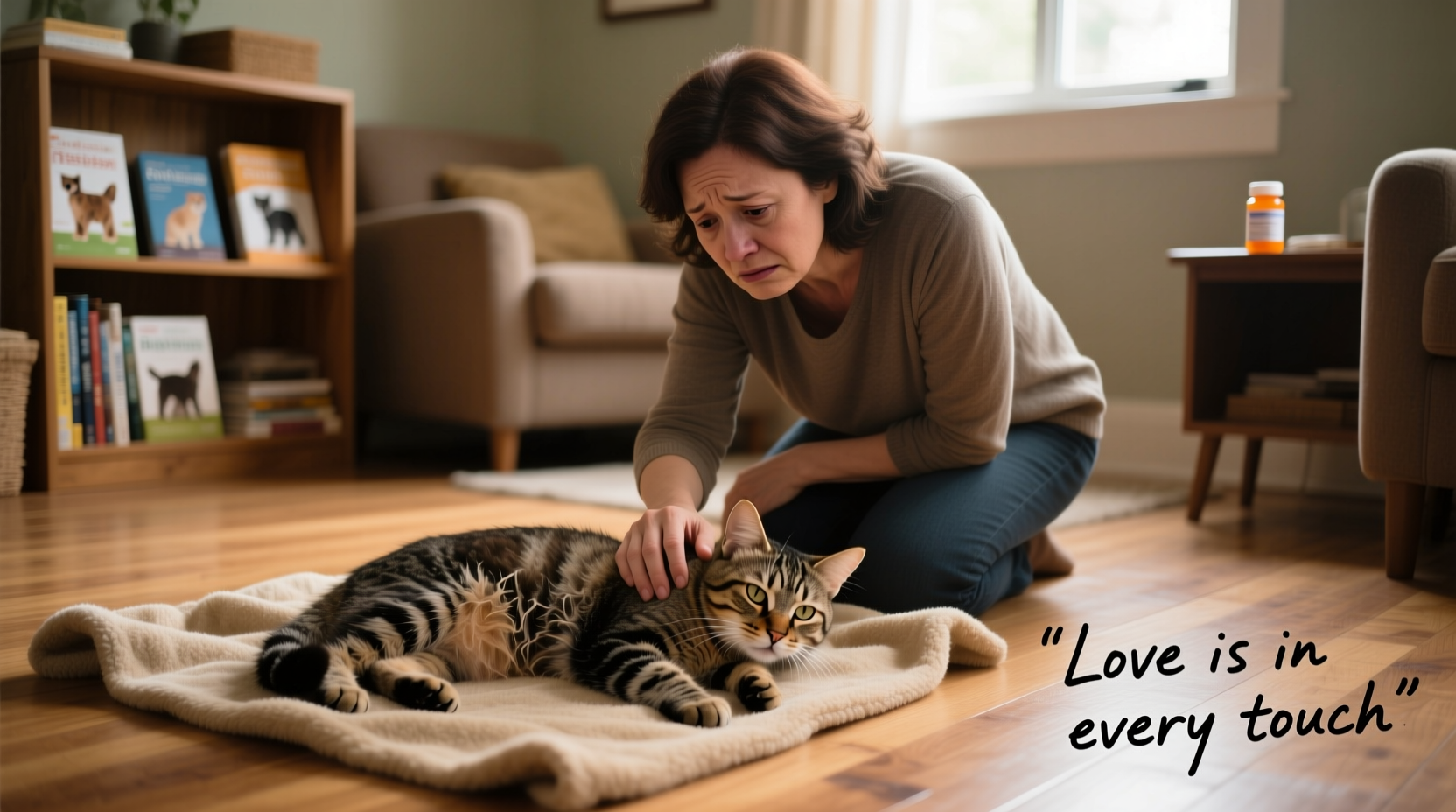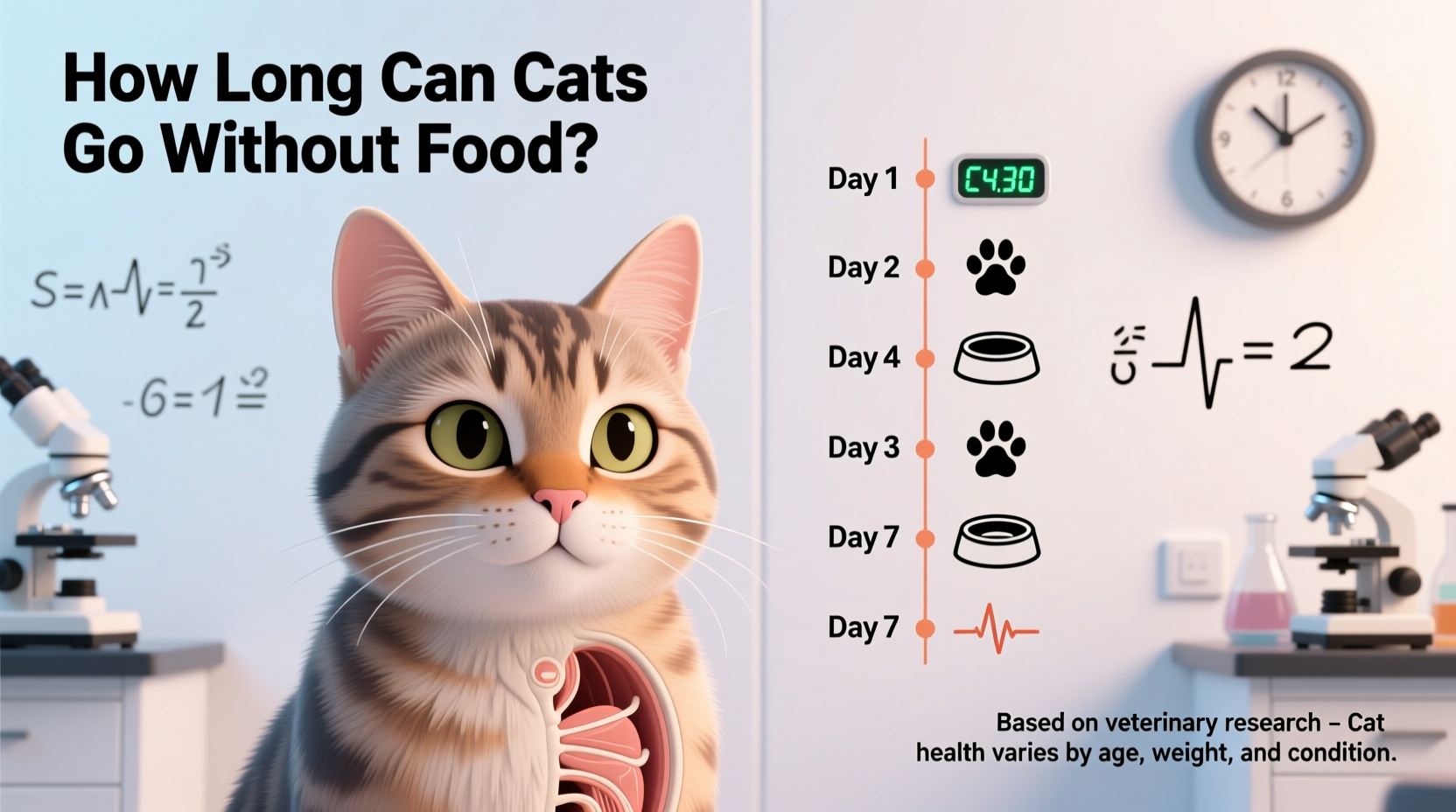As a concerned cat owner, you need clear guidance on this urgent matter. Understanding exactly how long your feline companion can safely go without food could mean the difference between a quick recovery and a life-threatening emergency. This guide provides vet-backed timelines, warning signs to watch for, and actionable steps to protect your cat's health.
Why Cats Can't Safely Skip Meals Like Other Animals
Cats have a unique metabolism that makes prolonged fasting particularly dangerous. Unlike dogs or humans, felines are obligate carnivores with specialized nutritional requirements. When cats stop eating, their bodies rapidly break down fat stores for energy. However, their livers aren't designed to process large amounts of fat efficiently, leading to a potentially fatal condition called hepatic lipidosis.
According to the Veterinary Information Network, hepatic lipidosis can develop in otherwise healthy cats after just 24-48 hours of complete food refusal. This metabolic disorder causes fat to accumulate in liver cells, impairing liver function and creating a dangerous cycle where the cat feels increasingly nauseous and refuses to eat.
Critical Timeline: What Happens to Your Cat Hour by Hour
Understanding the progression of health deterioration helps you recognize when to seek immediate veterinary care. The following timeline shows how quickly a situation can become critical:
| Time Without Food | Physiological Changes | Urgency Level |
|---|---|---|
| 0-24 hours | Normal hunger response; no significant health risks for healthy cats | Monitor closely |
| 24-48 hours | Beginning of fat mobilization; risk of hepatic lipidosis increases significantly | High concern - contact vet |
| 48-72 hours | Hepatic lipidosis likely developing; severe dehydration risk; organ stress | Emergency - immediate vet visit required |
| 72+ hours | Critical liver failure; irreversible damage; high mortality risk | Life-threatening emergency |
Vulnerable Cats: When the Timeline Accelerates
Certain cats face dramatically shortened safe fasting periods. The Cornell Feline Health Center reports that specific populations require immediate veterinary attention if they haven't eaten for even 24 hours:
- Kittens under 6 months: Can develop hypoglycemia within 12 hours
- Senior cats (10+ years): Reduced organ function decreases fasting tolerance
- Overweight or obese cats: Higher risk of rapid hepatic lipidosis development
- Cats with pre-existing conditions: Diabetes, kidney disease, or hyperthyroidism accelerate complications
Warning Signs That Demand Immediate Veterinary Care
Don't wait for the 48-hour mark if you notice these critical symptoms:
- Visible weight loss (5-10% of body weight)
- Jaundice (yellowing of gums or eyes)
- Vomiting or diarrhea accompanying food refusal
- Extreme lethargy or inability to stand
- Dehydration (skin tenting test positive)
- Changes in breathing patterns
The American Association of Feline Practitioners emphasizes that cats showing these symptoms require veterinary evaluation within 12-24 hours, regardless of the exact fasting duration.
Step-by-Step Action Plan When Your Cat Stops Eating
Follow this vet-recommended protocol if your cat refuses food:
- First 12 hours: Monitor closely, try warming food or offering strong-smelling options like canned tuna water
- 12-24 hours: Check for other symptoms, try hand-feeding small amounts of favorite foods
- 24 hours: Contact your veterinarian for advice, even if no other symptoms are present
- 24-48 hours: Schedule immediate veterinary appointment; document symptoms and behavior changes
- 48+ hours: Seek emergency veterinary care regardless of other symptoms
Never force-feed your cat without veterinary guidance, as this can cause aspiration pneumonia. Instead, focus on making food more appealing through warming, hand-feeding small portions, or trying different textures.

Preventing Future Food Refusal Episodes
Proactive measures can help avoid recurring appetite issues:
- Maintain consistent feeding schedules to regulate hunger hormones
- Keep multiple food options available for times of illness
- Regularly monitor your cat's weight (monthly at home)
- Address stressors in the home environment that may affect eating
- Schedule biannual veterinary check-ups for early detection of health issues
Remember that sudden appetite loss often indicates underlying medical problems. The International Society of Feline Medicine reports that dental disease, gastrointestinal disorders, and kidney problems account for over 70% of appetite loss cases in adult cats.
When to Consider Specialized Veterinary Nutrition Support
If your cat has chronic appetite issues, ask your veterinarian about:
- Appetite stimulant medications
- Therapeutic diet options
- Nutritional supplements
- Feeding tube options for severe cases
Early intervention significantly improves outcomes. According to a 2023 study published in the Journal of Feline Medicine and Surgery, cats receiving nutritional support within 24 hours of appetite loss had a 92% recovery rate compared to just 47% for those treated after 72 hours.
Frequently Asked Questions About Cat Fasting
Here are answers to common concerns about cats not eating:











 浙公网安备
33010002000092号
浙公网安备
33010002000092号 浙B2-20120091-4
浙B2-20120091-4